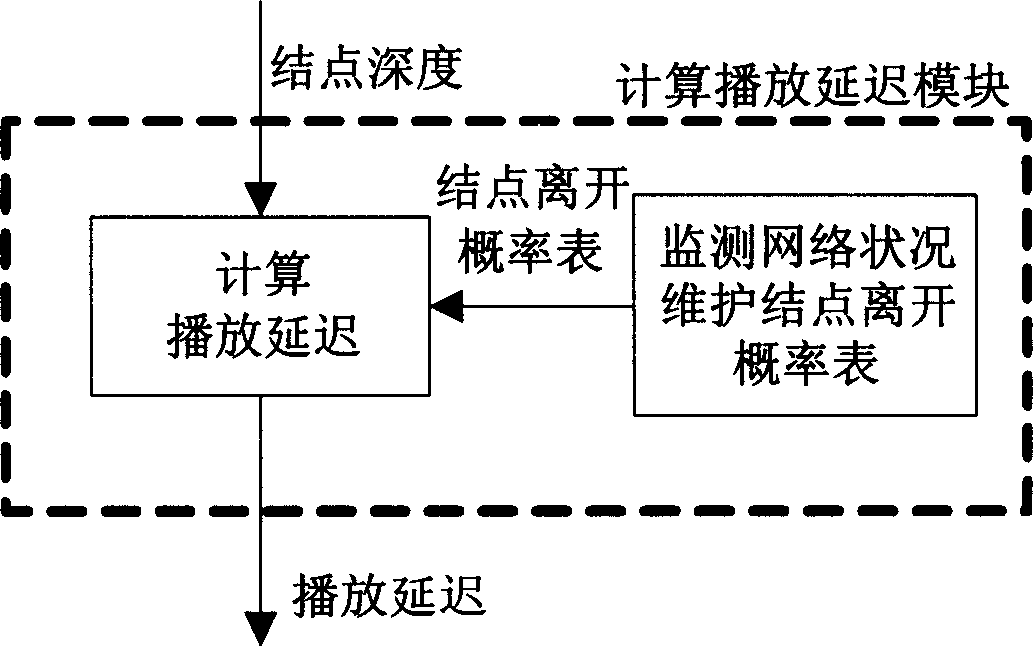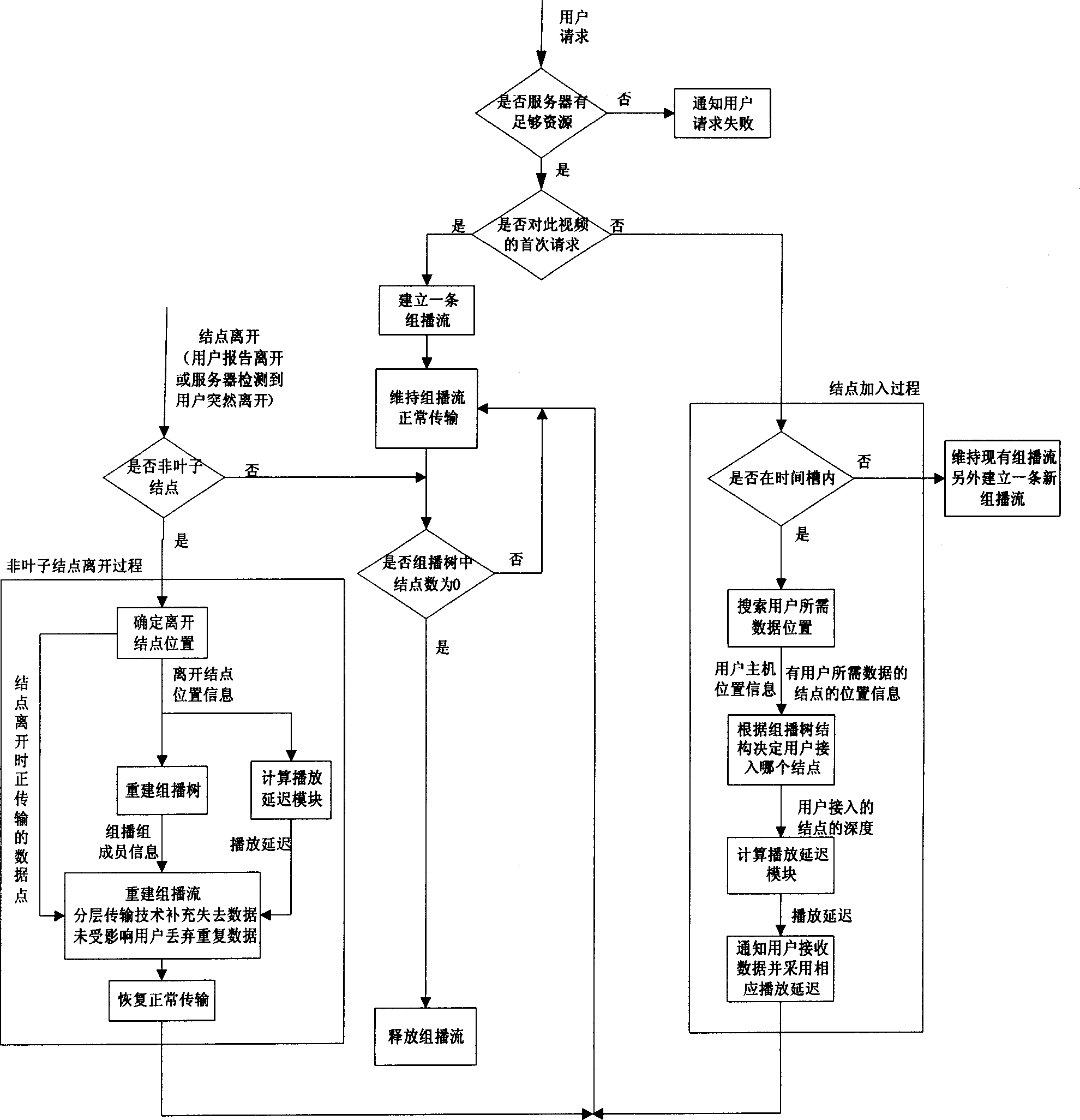Method for implementing video request program under cover network multicasting
A video-on-demand and overlay network technology, applied in the direction of two-way working system, etc., can solve the following problems such as interruption of playback, less number of streams, and less user buffer logic division, etc., to achieve the effect of ensuring playback continuity
- Summary
- Abstract
- Description
- Claims
- Application Information
AI Technical Summary
Problems solved by technology
Method used
Image
Examples
Embodiment 1
[0024] Example 1, such as Figure 1b Shown, a kind of overlay network multicast under the present invention video on demand realization method has the following main steps:
[0025] Step 1. The user requests, whether the server has enough resources, otherwise, the user is notified that the request failed;
[0026] Step 2, judge whether it is the first request for this video, otherwise go to step 6;
[0027] Step 3, establish a multicast flow;
[0028] Step 4, maintain the normal transmission of the multicast stream, monitor the network and the status of the multicast group members, if you receive a request from the user to order the same video program, go to the step of "when there is a user request to order the same video program"; if it is detected If a user leaves, go to the step "when the user reports leaving or the server detects that the user leaves suddenly"; if a request from the user for VCR operation is received, go to the step "when the user requests VCR operation...
Embodiment 2
[0070] As shown in Figure 3, Figure 4 and Figure 5 As shown, the network multicast tree represents the video-on-demand method, and the time slice represents the multicast VCR process. The same assumptions are used as in Example 1.
[0071] Describe the node joining process and playback delay calculation, as shown in Figure 3. A multicast tree has been established in the VOD system as shown in Figure 3(a). At this time, users X and Y request to join, and the request is sent to the video server S. The data required by X can be obtained on A, and the data required by Y can be obtained on D. According to the data they need, S connects X to user A to obtain data, and Y connects to user D to obtain data. According to the proposed media stream scheduling method, during the user joining process, the playback delay of users closer to the root node can be smaller, and the playback delay can be increased step by step, while the playback delay of the leaf node is the largest. As sho...
PUM
 Login to View More
Login to View More Abstract
Description
Claims
Application Information
 Login to View More
Login to View More - R&D
- Intellectual Property
- Life Sciences
- Materials
- Tech Scout
- Unparalleled Data Quality
- Higher Quality Content
- 60% Fewer Hallucinations
Browse by: Latest US Patents, China's latest patents, Technical Efficacy Thesaurus, Application Domain, Technology Topic, Popular Technical Reports.
© 2025 PatSnap. All rights reserved.Legal|Privacy policy|Modern Slavery Act Transparency Statement|Sitemap|About US| Contact US: help@patsnap.com



